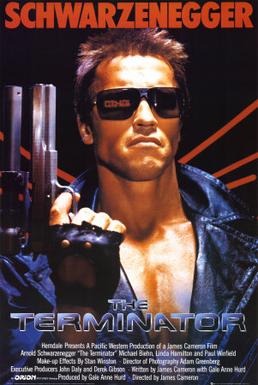For the poster project, I have decided to go with the theme
of Modernism and the rise of machines. I made this choice because I felt that
there is so much potential for a poster as a result of the sci-fi genre being
very popular and having the potential to have a lot to work with. Another
reason is because the idea of robotics is so broad meaning that there would be
a lot of content, ideas and quotes to use to construct the poster.
The idea behind the rise of the machine is that, as we
advance in technology and science, we are allowing machinery more access to
skills and what we can accomplish. The media has taken this idea and created
many different products with the idea of advanced artificial intelligence (‘2001: A Space Odyssey’ featured HAL 9000
as the antagonist for example) to the point that Iasac Asmiov introduced the idea of three laws that robots
must follow in his 1942 short story ‘Runaround’ featured in his short story compilation
‘I, Robot’. The laws involved not injuring humans or allowing them to be
harmed, obeying orders given by humans and projecting its own existence as long
as it doesn’t contradict the previously stated rules.
The way that robots are portrayed in the media varies
depending on the source. Some films such as ‘The World’s End’ portray them as trying to make the planet a better
place by replacing all the humans while on the other hand, a film such as ‘The Terminator’ implies that the advancement
of technology and awareness of artificial technology will lead to a war between
humans and robots. What I find fascinating about the theme of rise of the
machine is that it plays a lot into morality. ‘The World’s End’ makes it debatable as it whether or not they are
wrong. Characters mentioned that the replaced people are friendlier and make
Newton Haven a better place yet, in essence, people are still being killed in
the process.
Rise of the machine can also see technology outside of
robotics advance too with life imitating such as the use of mobile phones first
seen in ‘Star Trek’ or devices very reminiscent of iPads and the use of
touchscreens seen throughout the sci-fi genre. Now, these ideas that were
simply dreamed up for fiction are a part of our everyday lives which will
instantly display how far with technology we have come.
For the final poster, I had to come up with what actors to use based on their previous works or what they were working on recently. For example, Jared Leto, Jaimie Alexander and Chadwick Boseman are all involved in comic book films with Alexander and Boseman being part of the Marvel Studios films and Jared Leto being cast of the Joker for the next Batman film. Since comic book films clearly have a strong hold on Hollywood, it therefore made sense that these would be names that sci-fi fans would be familier with and would ultimately want to see based on actors alone. I picked Andrew Lincoln for his work as the protagonist on 'The Walking Dead' which is the most popular post-apocalyptic series at the moment and Alan Tudyk for his sci-fi works such as the TV show 'Firefly' and starring as the main robot, Sonny, in 'I, Robot'.













